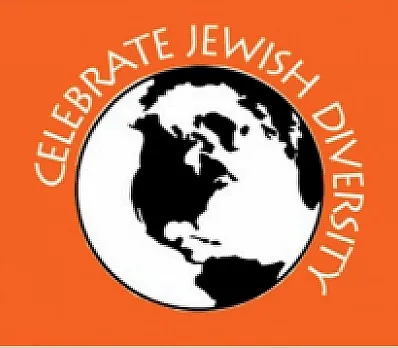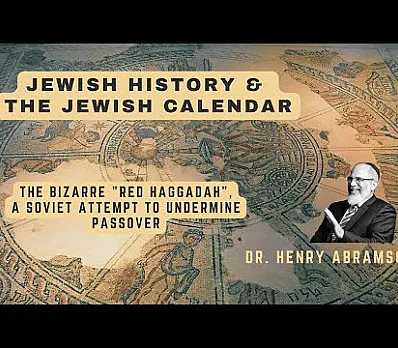Maaseh bBnei Brak
R’ Akiva lived in Bnae Brak. But R’ Akiva was R’ Eliezer’s student! Why the was the senior R’ Eliezier – who’s hometown was in Lud – home of the Sanhedrin – coming to visit his student’s house?? Shouldn’t it be the other way around? Making this question even more puzzling is the talmud Succah 33B, where R’ Eliezer stated he “never goes away for Yom Tov!!” What’s the dealeo? – Why suddenly was there an all night torah slumber party at R’ Akiva’s house? The answer is that these rabbis all lived in the generations that directly followed the destruction of the temple, a very dark and sad time for our people. No one kept the optimism and the excitement for better times like R’ Akiva - as described in the end of the Talmud in Makkos – which explains how R’ Akiva was able to see the best things (3rd Temple) in the worst situations (animals in the temple ruins). For this reason, he became the spiritual anchor of his time, and all the rabbis came to R’ Akiva for gain from his unbeatable faith and optimism. Note: Check the last letters of each word in the pasuk: oR zaruA latzadicK, ulyishraI LaV SimchA
Its R’ A K I V A! - anyone who can see the best in the worst situation – shows the endurance of a true believer a true tzadik.
Is there any point in this “All night learning in Bnei-Brak”? Throw me a bone here! (shank bone preferably)
The 5 Rabbis (Rabbi Eliezer, Rabbi Yehoshua, Rabbi Elazar Ben Azaryah, Rabbi Akiva, and Rabbi Tarfon) who sat up all night in B’nei Brak discussing the seder, until their alarm clock students came to inform them that it was time to say the morning “Kriat Shema.” The length of their exposition is extraordinary unto itself, but even more amazing when you see who these Rabbis are. Their names appear throughout the Talmud, so it is no surprise that they can engage in lengthy discourse on matters of Judaism. But this particular conversation was important, because as they went over the Haggadah, telling of how Hashem had saved their forefathers, they could have technically been called liars. Yep. L I A R S. See, none of them were descended from slaves. All of their ancestors had either been converts, who obviously had not been in Egypt at the time, or from the tribe of Levi (including Kohanim), which Egypt had exempted from slavery, as the Priestly class. So while we are commanded to see ourselves as if we, today, were being brought out of Egypt like our forefathers, these Sages would have thought back to their ancestors’ lives of relative luxury! How could they possibly be so involved in a story that didn’t directly concern them or their family! From here, we learn a powerful lesson about Passover, and ourselves. The Jewish people is one entity- though we have different names, and occupy (vastly) different branches of the family tree, we are still inter- connected, and our fates inextricably tied to one another. If one Jew suffers, than it is incumbent upon all of us to alleviate that suffering. (Of course, though possibly on a different level, the same applies to all mankind- we share our world and origins, and are required to help anyone we can). Something that happens to our proverbial neighbor most definitely concerns us. This unity of experience, and consequent unity of purpose, should drive us every day, just as it drove those Rabbis, who rather than saying, “At least my family wasn’t enslaved,” proclaimed, “My people was enslaved- my brethren were oppressed- let us celebrate their redemption and ours, and let us pray for G-d to redeem us again!” And indeed that is the lesson of Passover- the Jewish people seem to be the most adept in the world at drawing lines between one Jew and his fellow. We incorrectly allow our external differences to indicate that we are different inside, as well- and thus we are enslaved by our own conflicts. Let us learn the lessons of the seder- free ourselves from our self-imposed slavery by recognizing that unity in our people can bring the ultimate redemption. (Steven Schwartzberg, NY, NY )
Why was this Studying All Night? Was there a pop-quiz in the AM?
The Haggadah proves that no matter how great and wise you are, you can still grow. These great rabbis were talking all night about the Exodus. When they finished their meal, they continued to discuss and probe. They talked about freedom: "Are we trapped? What's holding us back?" They talked about the Red Sea: "What would you have done as you were crossing the sea? Would you have jumped in? How would you have felt walking through the water?" And they talked about the blood on the door post. Actually most people think the blood was on the outside of the post, so the angel of death would pass over. Really, though, the blood was on the inside of the post. The Jews sat there that first Passover night, staring at the blood. They were going to walk out of Egypt in the morning and enter into a covenant with God.
How would you have felt that night before you left? Would you put your outfit out? What things would you leave behind? The rabbis worked all night on these ideas. We should, too. (Rabbi Tom Meyer aish.com)
Inspired to create
your own Haggadah?
Make your own Haggadah and share with other Seder lovers around the world
Have an idea
for a clip?
People like you bring their creativity to Haggadot.com when they share their ideas in a clip
Support Us
with your donation
Help us build moments of meaning and connection through
home-based Jewish rituals.
OUR TOP CONTRIBUTORS
Passover Guide
Hosting your first Passover Seder? Not sure what food to serve? Curious to
know more about the holiday? Explore our Passover 101 Guide for answers
to all of your questions.






















